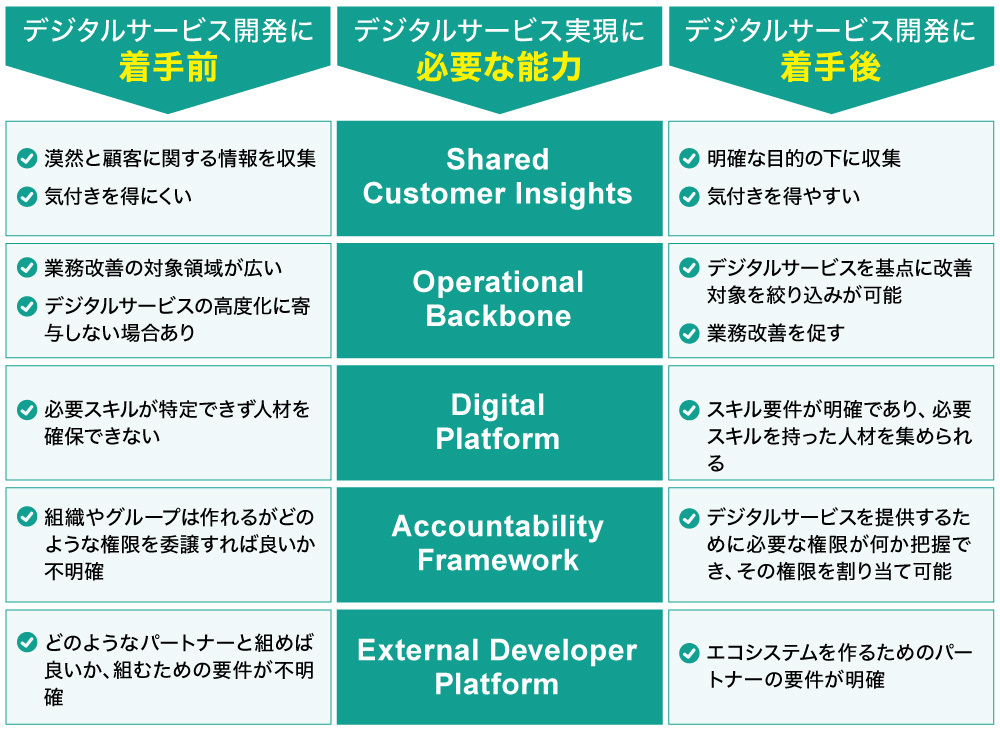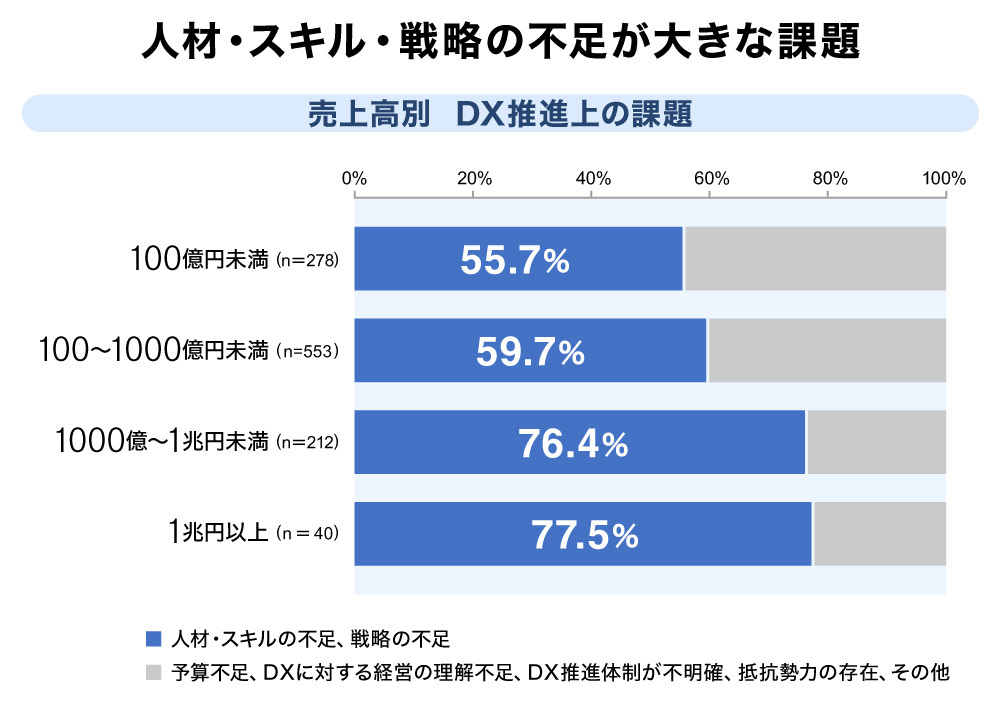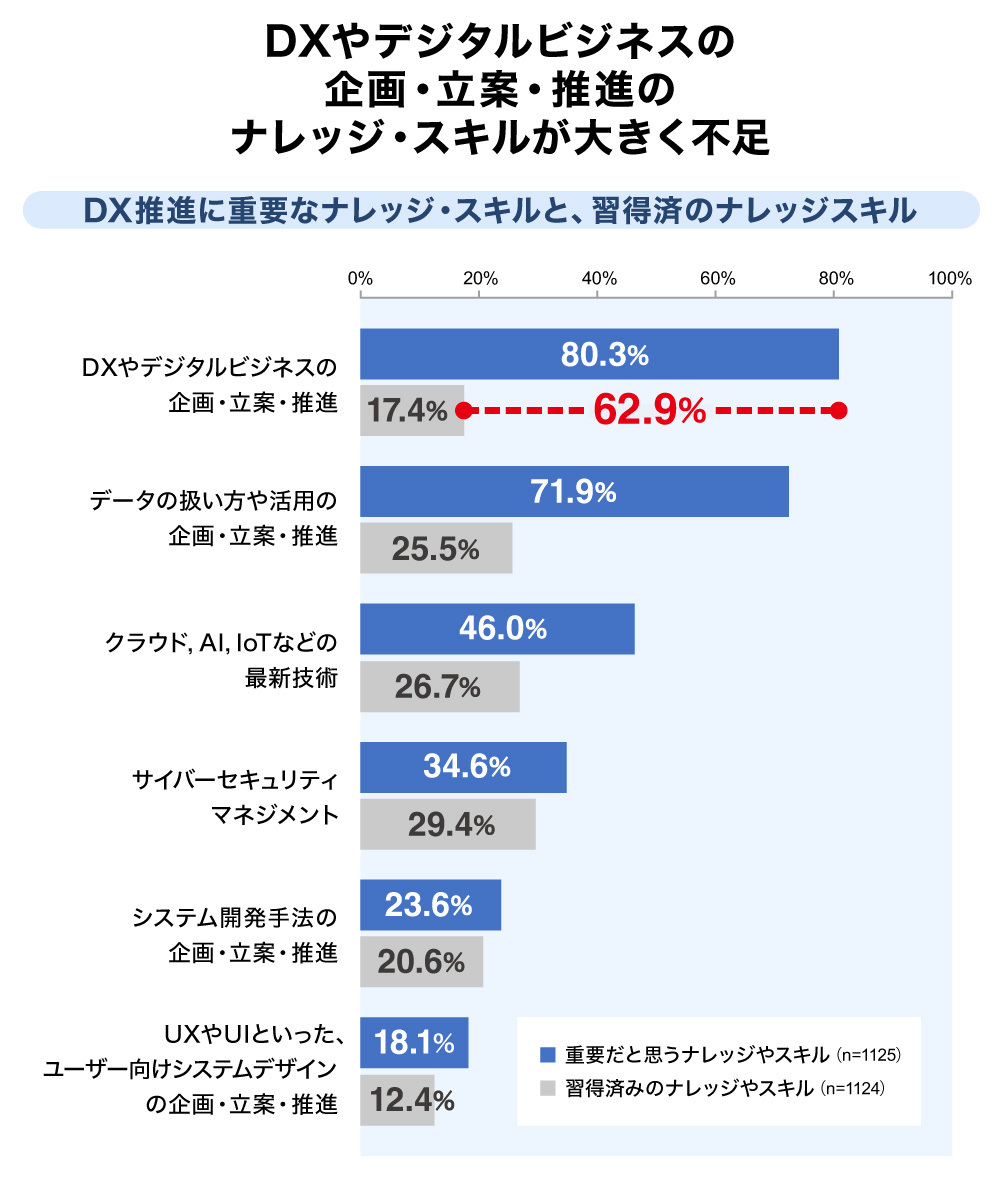Note: This website was automatically translated, so some terms or nuances may not be completely accurate.
Catch Two Birds with One Stone—or Even Three!? The Story of "Digital Service Development × Operational Efficiency"
As more companies shift their business focus from selling products to selling experiences, they are increasingly taking on the challenge of developing digital services.
Naturally, digital service development requires resources. Here, many companies follow this path:
streamline existing operations → secure surplus resources → develop digital services with those surplus resources
However, this approach doesn't always proceed as intended, does it?
In this article, Katsumi Akieda of Dentsu Consulting Inc., who supports corporate DX as an "external stakeholder," introduces one approach concerning "digital service development" and "business efficiency."
Digital service development typically begins with streamlining existing operations
We are now entering an era where virtually every company is tackling digital service development. Naturally, launching new services requires resources like people, money, and materials.
From a management perspective, it's preferable not to simply invest "additional resources," but rather to streamline existing operations and utilize the "surplus resources" generated from that. In the author's experience, many companies adopt this approach.
The Ministry of Economy, Trade and Industry's "DX Report 2.2" also suggests that many companies are starting by optimizing their existing operations.
This report indicates that approximately 70% of companies understand the necessity of creating and innovating services. It also points out that corporate digital investments are primarily directed toward optimizing existing business operations, and that resources allocated to DX promotion are not leading to corporate growth.
What are the "Five Capabilities" necessary for realizing digital services?
Next, let's consider the capabilities needed to realize digital services.
For digital services to be accepted by target customers and used continuously, companies must constantly collect "customer feedback" on the service and continuously improve it.
In other words, companies must be capable of implementing such operational processes (i.e., possess the organizational capability to deliver digital services).
According to the book "Designed for Digital: How to Architect Your Business for Sustained Success," which presents a framework derived from overseas digital transformation (DX) case studies and has been translated into Japanese, the following five capabilities are essential for companies providing digital services:
1. Shared Customer Insights
The ability to understand customer needs
2.Operational Backbone
The ability to implement standardized processes, data, and seamless system integration to efficiently execute business activities
3.Digital Platform
Software development capabilities to deliver digital services
4.Accountability Framework
The ability to build organizations that rapidly develop and improve services
5.External Developer Platform
Ability to collaborate with external partners as an ecosystem
There is no correct order for acquiring these capabilities, nor are there established standards for the level of capability each should possess. The report emphasizes that each company must develop and leverage these capabilities according to its own circumstances.
Now, considering the aforementioned "DX Report 2.2," it appears that many companies are still focused on the prerequisite "2. Operational Backbone," striving to enhance the capabilities necessary to provide digital services.
Three Problems with Approaching Through Operational Efficiency
Why does the approach of starting with optimizing existing operations often fail? From my experience across several workplaces, I see three main problems.
Issue 1: Efficiency improvements take too long, preventing digital service development
Achieving operational efficiency requires significant time. When tool implementation is involved, it's not uncommon for it to take over a year for new workflows to become established. This delays the start of the original goal: developing digital services.
Issue 2: Risk of failing to achieve expected results
Pursuing efficiency changes, regardless of scale, impacts "current operations." Without clearly explaining the purpose of these changes to affected stakeholders, you cannot gain buy-in from the field. Consequently, efficiency improvements may stall, and the expected benefits may not be fully realized.
Issue 3: Resources are required to streamline operations
Even when tackling efficiency improvements with internal personnel alone, human resources must be allocated. Outsourcing, of course, incurs costs. For example, utilizing SaaS to achieve efficiency will incur ongoing costs, regardless of the scale of the effect.
Many companies are currently dedicating significant time and expense to resolve these issues.
As information reflecting corporate realities, the "JUAS Corporate IT Trends Survey Report 2022" published in the "DX Report 2.2" shows the implementation status of DX promotion initiatives (Figure 2-1-18 Implementation Status of DX Promotion Initiatives). According to this, when asked about "standardizing or revamping business processes," responses of "actively working on it, but results are forthcoming" and " are considering specific initiatives," indicating that 70.1% of companies are currently engaged in these efforts.
The "Start with Digital Service Development" Approach is Effective
One solution to the challenges inherent in starting with operational efficiency is to allocate a certain amount of resources to digital service development "first." In other words, it means reversing the sequence of thinking.
By making the enhancement of the created digital services the driving force, business standardization and efficiency improvements advance, enabling cost reduction. Only then can surplus resources be obtained.
Standardizing and streamlining operations improves the quality of data generated by those operations. Naturally, this enhances the digital services that utilize that data, leading to top-line growth. This creates a virtuous cycle, driving increased sales, improved operational efficiency, and cost reduction across the entire company, accelerating the shift towards selling experiences.
Let's consider what problems might arise if we started with digital service development.
Issue 1: Additional Costs Directly Squeeze Profits
While resources are still needed to improve operational efficiency, this approach lacks the cost-reduction benefits of efficiency gains. Consequently, the "newly incurred costs" directly squeeze the company's profits.
Issue 2: Increased operational burden on existing businesses
Digital service development involves repeated trial and error, potentially generating new requests for existing systems and operations each time. In an inefficient operational environment, tasks are complexly intertwined, meaning a single operational review can ripple through related tasks, amplifying the impact.
Issue 3: Low-quality data from existing operations impacts service quality
The "company-specific data" that creates competitive advantage is generated from actual operations. However, if operations are not streamlined (standardized), the data needed for digital services cannot be gathered, preventing the enhancement of service quality.
These three problems can be solved through operational improvement. However, even with the same operational improvement, the "approach starting with operational improvement" differs in the level of detail applied to the improvement targets.
In the "approach starting with digital service development," you can narrow down the improvement targets through backcasting, starting from the "desired state" of the digital service. This is the key difference between the two approaches.
Having a clear "desired state" allows for narrowing down the improvement targets and focusing on specific areas for enhancement.
The same applies when modifications to business systems are required. Business system modification projects often have schedules set far in advance, making it difficult to adjust priorities when requirements and expected benefits are poorly defined.
However, when pursuing the "desired state" for digital services, specific modification requests for the business system and the expected benefits of those modifications can be clearly presented. This enables priority adjustments and allows for earlier implementation of business system modifications.
Thus, the "approach starting with digital service development" not only enables early initiation of digital service development but also promotes operational improvements.
Furthermore, it contributes to enhancing the capability of the "Operational Backbone"—one of the essential capabilities required to realize digital services and a necessary condition for companies providing digital services.
The "Five Capabilities" grow more readily when concrete services are operational!
Consider whether there is a difference in the ease of undertaking capability improvement efforts before and after starting digital service development. Organizing the previous five capabilities, we can summarize as follows.

For the four capabilities other than "Operational Backbone," using "concrete services" as a starting point facilitates progress in consideration and makes it easier to achieve the necessary capability improvements.
Where should you start to begin digital service development?
The approach we propose: "Start with digital service development."
By first launching the digital service itself, it advances the standardization and efficiency of operations, creating surplus resources. Furthermore, it enhances the capabilities necessary to realize the digital service. This is precisely an approach where you don't just kill two birds with one stone, but rather chase two rabbits and gain three.
If a company were to adopt this approach, where should it begin?
First, to plan and design the digital service, you need to start by exploring what customer challenges it will solve. Then, you develop a strategy—including why your company should tackle this challenge and how to monetize it as a viable business—and formalize it into a proposal.
However, many companies report lacking the personnel and skills to execute planning and development. According to the "Corporate IT Trends Survey Report 2022," over 55% of companies cite insufficient personnel, skills, and strategy as challenges.

Furthermore, while companies recognize the importance of knowledge and skills in "planning, designing, and driving DX and digital business," only 17.4% report having acquired these capabilities, highlighting a widespread challenge.

At Dentsu Consulting Inc., we partner with companies considering launching digital services, working together from the exploration phase. We not only create business concept documents but also accompany you through the actual service launch and growth stages. If this interests you, please feel free to reach out.
Dentsu Consulting Inc.
https://www.dentsuconsulting.com/
[Reference]
"DX Report 2.2", Ministry of Economy, Trade and Industry (METI) Research Group on Transformation to a Digital Economy
"Designed for Digital: How to Architect Your Business for Sustained Success (Management on the Cutting Edge)", Jeanne W. Ross, Cynthia M. Beath, Martin Mocker
Jeanne W. Ross, Cynthia M. Beath, Martin Mocker, translated by Nomura Management School (October 2020), "DESIGNED FOR DIGITAL: Organizational Transformation for Sustained Success", Nikkei BP, Nikkei Publishing
"Corporate IT Trend Survey Report 2022: Latest Trends in IT Investment and Utilization by User Companies (FY2021 Survey)", Japan Information Systems Users Association (JUAS)
Was this article helpful?
Newsletter registration is here
We select and publish important news every day
For inquiries about this article
Back Numbers
Author

Katsumi Akieda
Dentsu Consulting Inc.
Principal
Worked at a manufacturer-affiliated systems development company, engaged in IT consulting including business system development and business process reengineering. Subsequently, after working at a foreign consulting firm, joined Dentsu Digital Inc. in 2018, where I was involved in planning, conceptualization, and execution support in the marketing domain. Assumed current position in 2022. Provide broad support ranging from planning and conceptualization of new digital services to expanding usage post-service launch. Support clients' business transformation from both the business side and the development side.



